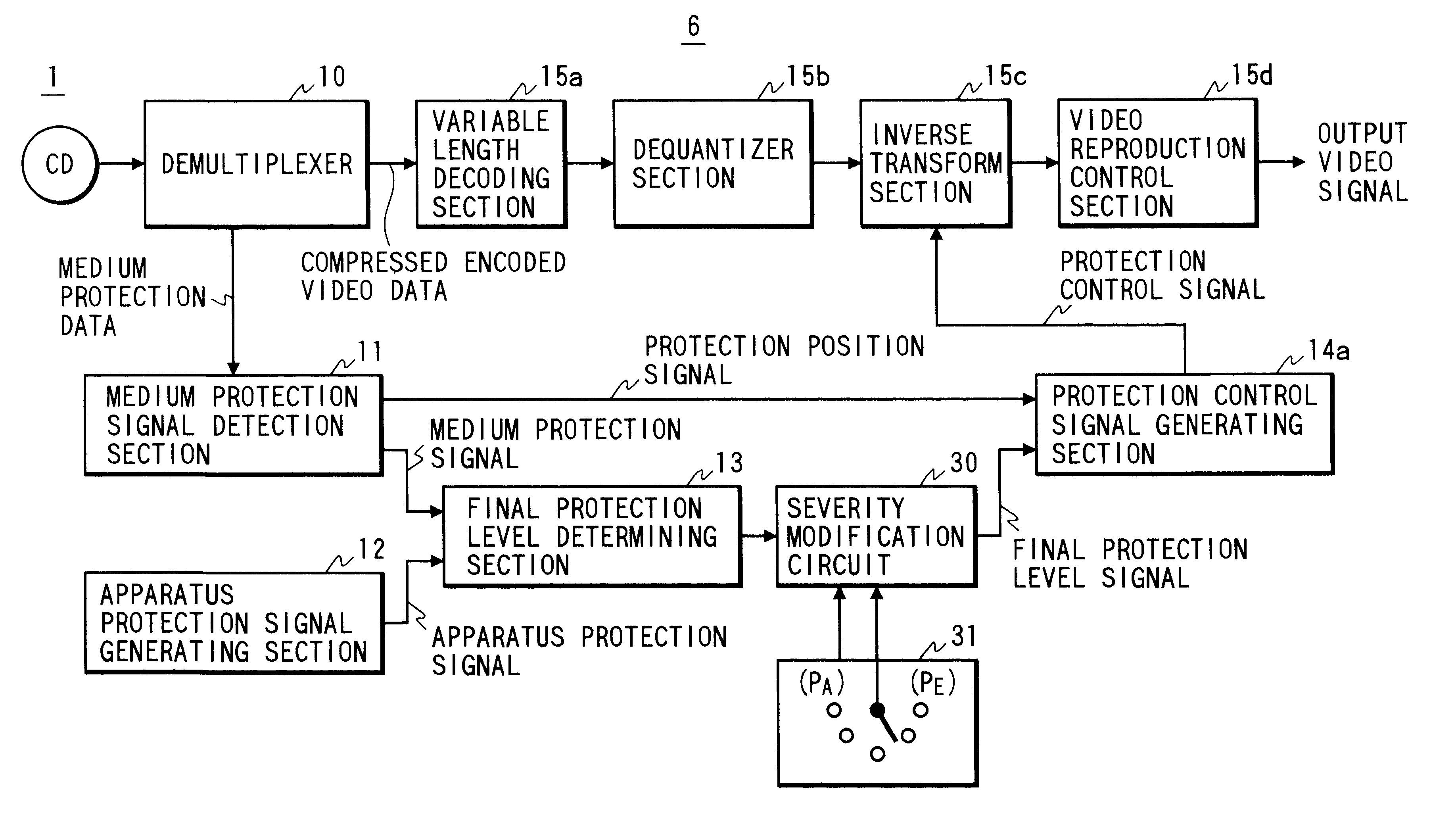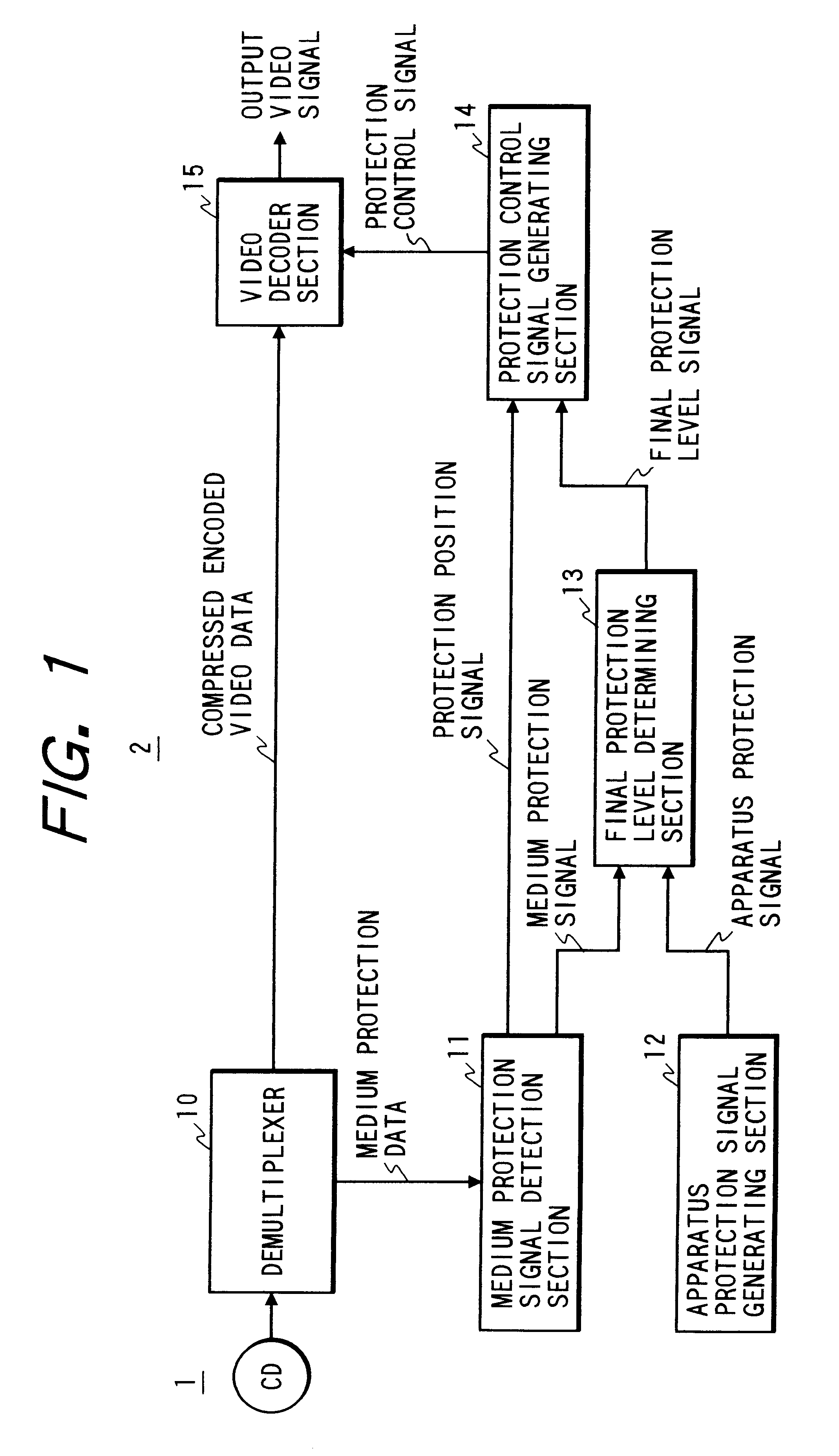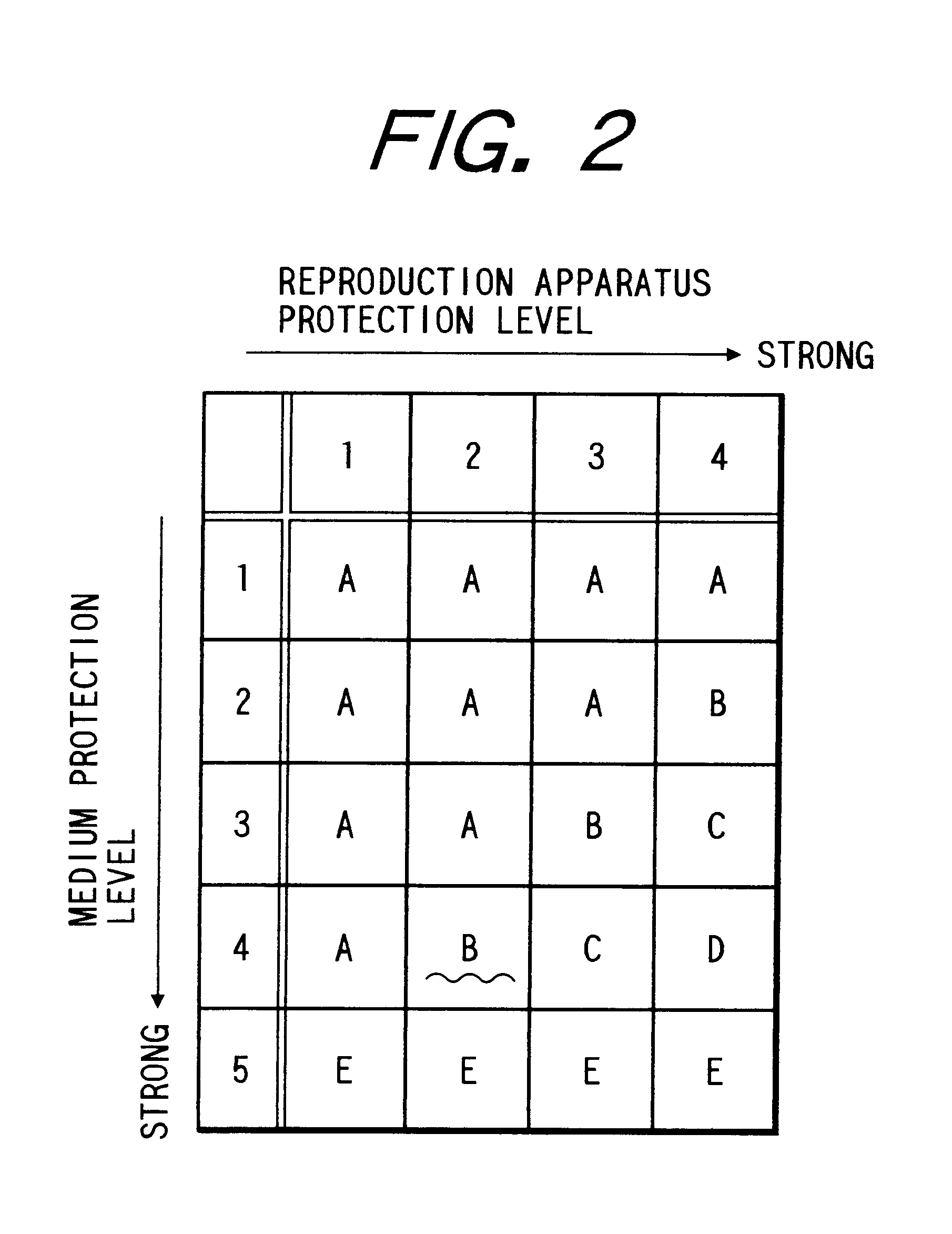With such a method and apparatus for reproduction protection, the protection level can determined in accordance with the medium protection data, and hence can be determined in accordance with the wishes of the manufacturer of the data medium, or of the copyright owner of the main data. In addition, the protection level which is actually applied (i.e. the final protection level) is also determined in accordance with the apparatus protection data, which can be specified by the manufacturer or the seller of the reproduction apparatus. As a result, when the main data are to be reproduced (for example, during playback of a recording disk or tape), a graduated degree of limitation of reproduction is implemented, with that degree of limitation being determined by the final protection level, i.e. being determined in accordance with a combination of the requirements of the data medium manufacturer or the copyright owner of the main data and the requirements of the manufacturer or seller of the reproduction apparatus. In that way, considerable flexibility can be ensured in selectively restricting reproduction of signals which are conveyed for example by recording disks or tapes or by
broadcasting systems.
With the MPEG1
algorithm, a
block size of 8.times.8 picture elements is used in the DCT
processing. The transformed block is expressed by a DC component (i.e. DC coefficient) and a plurality of coefficients (the AC coefficients) which represent
signal level values at respectively different successively increasing frequencies. Thus if for example the inverse transform section 15c is controlled such that only the DC coefficient and the two lowest-frequency AC coefficients are used, in the inverse DCT operation for each block, then a specific reduction in resolution of all (or a specific part) of the
resultant display picture can be achieved in a very simple manner.
It can thus be understood that with the above embodiment of the invention, applied to video data which have been subjected to high-efficiency compression encoding using a data transform operation, stepwise changes in a degree of restriction of reproduction of the video data can easily accomplished by effecting stepwise changes in a degree of resolution of a finally obtained picture, or in a portion of that picture, and that such stepwise changes in resolution can be easily controlled in accordance with the final protection level which has been established based on the medium protection data and apparatus protection data. In particular, when such control is applied to the inverse DCT
processing, it is possible to easily effect stepwise changes in the
visibility grade, i.e. in the picture resolution, through use of unit blocks of picture element values which are basic to the transform
processing. Such a type of control of the
visibility grade, operating within each frame of the video signal, can be considered as applying protection in a (2-dimensional)
spatial domain.
Alternatively, control of the degree of reproduction limitation can be performed by arranging that the protection
control signal from the protection
control signal generating section 14b acts on the video reproduction control section 15d' such as to vary (in accordance with the final protection level) the number of gradations provided by each video data sample, i.e. to vary the number of amplitude levels that can be expressed by each sample. That can be performed by setting one or more low-order bits of each data sample to a fixed value, e.g. 0. For example if the LSB is always set to 0, then the number of possible gradations is reduced by half, and a corresponding lowering of resolution of the finally obtained display picture is achieved. The bits in each
digital data sample which are not fixed in that way will be referred to in the following as the effective bits of the sample. Such
gradation control based on the numbers of effective
data bits is illustrated by the right-side column in FIG. 6. In that example, if the final protection level is A, then the protection
control signal from the protection control signal generating section 14b has no effect on the operation of the video reproduction control section 15d', so that each video data sample used to form the output video signal has the standard number of effective bits, i.e. 8 bits. If the final protection level is B, then the protection control signal controls the video reproduction control section 15d' such that the number of effective bits / sample of the output video signal is reduced to 4 (i.e. by
rounding-off the low-order 4 bits to zero). If the final protection level is C, then the protection control signal controls the video reproduction control section 15d' such that the number of effective bits / sample is 2 (i.e. all except the two high-order bits are set to zero), so that the picture resolution is further degraded. Similarly, if the final protection level is D, then the video reproduction control section 15d' is controlled such that the number of effective bits is reduced to 1. If the protection level is E, then the video data for a predetermined picture are written into the frame memory of the video reproduction control section 15d' and repetitively read out as the final output video signal, to display only that predetermined picture.
Since MPEG1 audio compression utilizes sub-band encoding with 32 bands, such bandwidth restrictions can be effected by causing the second protection control signal to act on the dequantizer section 16b such as to set the
inverse quantization values corresponding to certain high-frequency bands to zero. Thus, audio reproduction protection by bandwidth control can be easily implemented.
 Login to View More
Login to View More  Login to View More
Login to View More 


